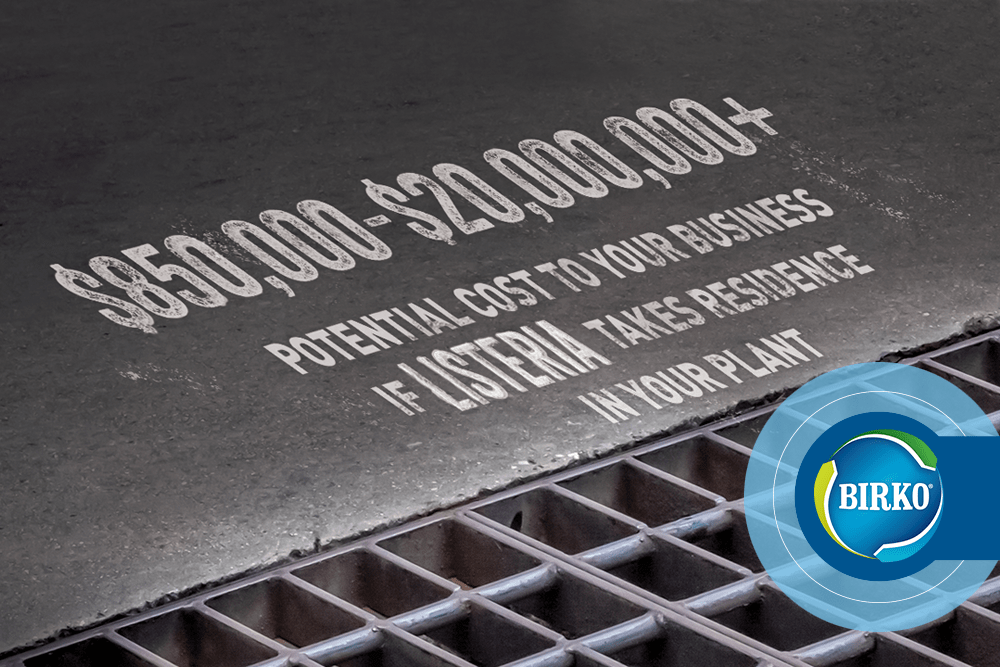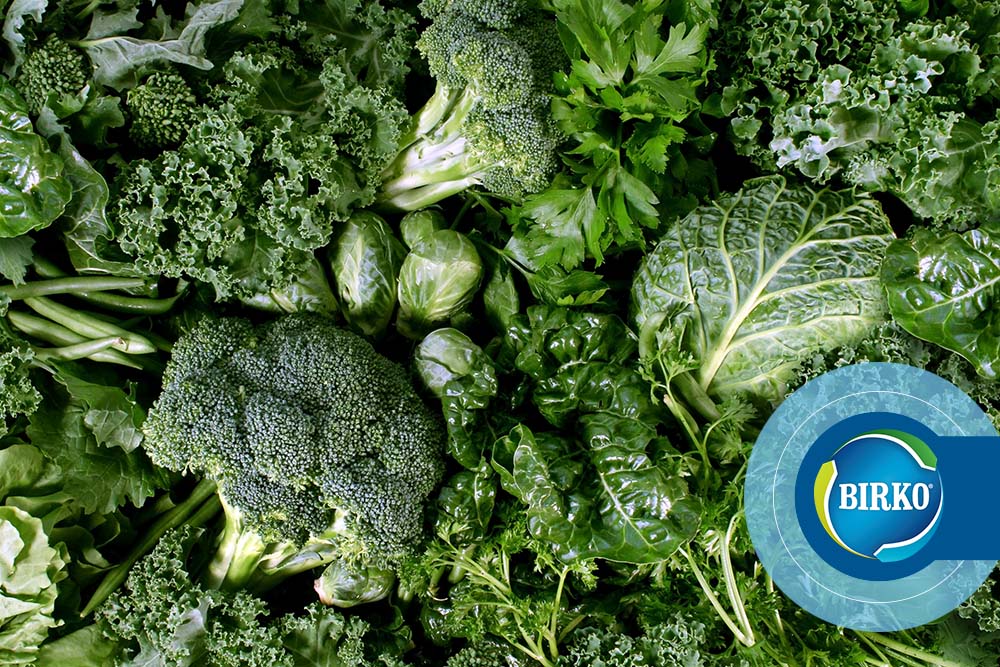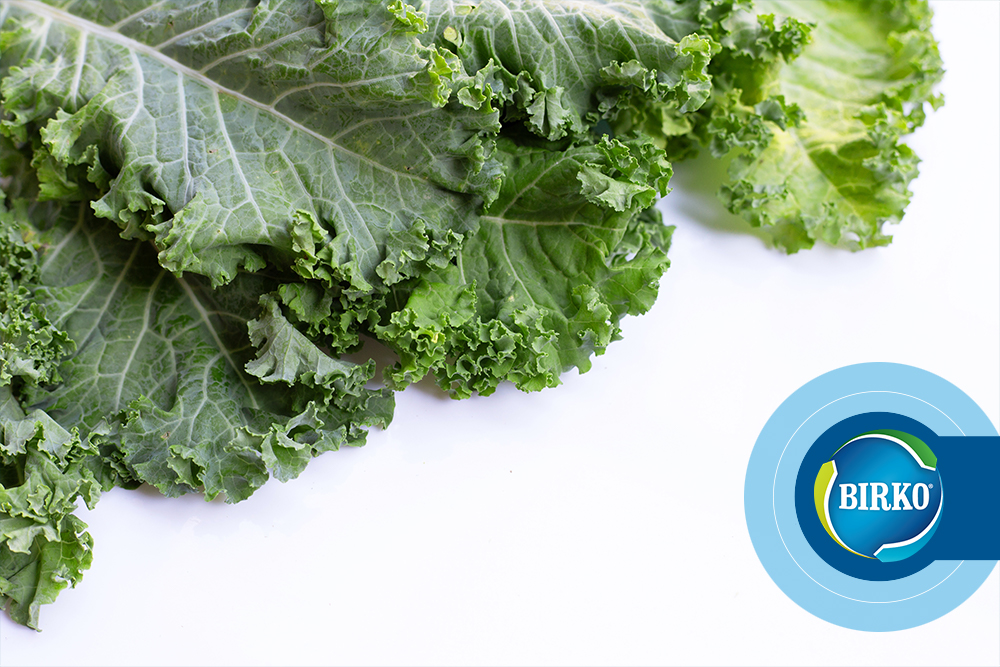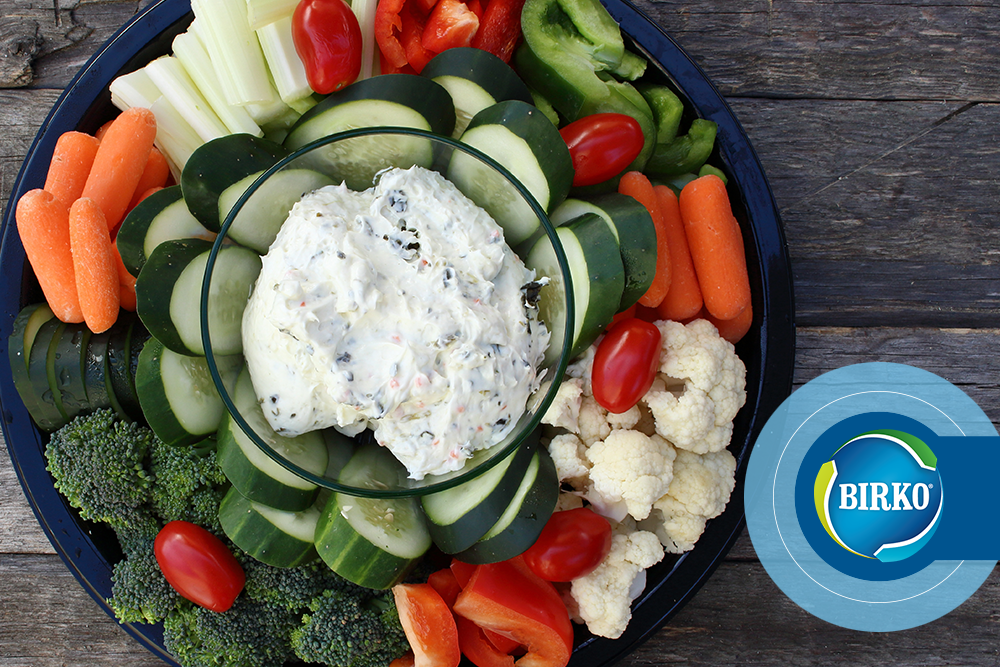A good police detective knows where the bad guys like to hang out, and those who are smart about food safety risks know the most likely places to find microbial contamination in a food processing facility. Do you know where to search for pathogens in your plant?
Increased scrutiny surrounding sanitation has many fresh-cut and produce processors looking for ways to strengthen food safety inside their plants. As the Food Safety Modernization Act (FSMA) prompts processors of all types and sizes to evaluate potential hazards, identifying problem areas where pathogens tend to hide will help with the development of preventive controls and compliance.
The best piece of advice Birko can provide is to follow the principles of sanitary design in your facility. The North American Meat Institute (NAMI) established a set of 10 principles, and they can be applied to produce processing plants as well.
Understanding sanitary design principles will help you identify areas in your plant where bacteria can take up residence and cause food safety concerns. Produce and fresh cut processors have unique food safety concerns, chief among them being the absence of a kill step during processing, such as cooking, which helps eliminate microbials.
One of the most problematic pathogens is Listeria, which can take up residence in a facility and become extremely difficult to remove. Listeria thrives in cold, wet environments, and that is exactly the type of surroundings fresh produce facilities provide.
It is your responsibility to be vigilant and identify the hiding spots and harborage areas that present food safety risks. Here are 10 places to address first:
1. Cracks and Crevices in Equipment
Two important principles of sanitary design involve ensuring that food processing equipment is free of niches, and that it is accessible for cleaning and sanitation.
The sanitation crew should be able to reach every part of the equipment, but machinery with open seams, tiny gaps, lap joints and other openings make it difficult to clean and eliminate microorganisms.
You should seal any space that is wide enough for water and soil to accumulate, but too narrow for sanitarians to reach. The best course of action is to first identify these areas where pathogens hide and, if necessary, gradually eliminate or replace that equipment as time and capital become available.
Consider welding hardware, such as bolts, brackets and mounting plates, to equipment rather than drilling holes.
2. Tables and Equipment Legs
Hollow table legs used in a processing facility should be permanently sealed. The legs of equipment that get bolted to the floor should also be hermetically sealed to avoid niches.
For example, let’s say you move a conveyor belt that was bolted to the floor from one area of the plant to another. You should fill and seal the holes in the floor where the conveyor once stood, and properly seal the equipment’s footings in the new area as well.
3. Control Panels
Control panels for equipment will unavoidably have cracks and crevices around buttons and switches, but they’re also sensitive to water. Use low water techniques to clean control panels and consider adding a hand sanitation station nearby. This ensures employees have clean hands before touching food products after operating the panel.
If you are mounting control panels to walls, leave an inch or two of space so that sanitarians can get behind the panel and clean.
4. Employees
Your employees can carry pathogens into the plant and may also be responsible for moving contaminants from one area of the facility to another. Controlling sanitation at entry points is something that is essential. Some leaders in the produce industry have implemented captive shoe programs or are using sanitation solutions such as boot foamers/scrubbers in entryways.
To mitigate the risk of pathogens hiding on employees, start with good hygiene training and the right protective gear including clean frocks or coats, gloves and hair/beard nets.
Determine which areas of your facility are high- and low-risk for employee contamination. A high-risk area includes anywhere a food product is exposed or handled between washing and packaging. Control movement between high- and low-risk areas and establish preventive controls that reduce the risk of contamination.
5. Flooring
Yet another place where cracks and crevices can create harborage areas for pathogens is the facility’s flooring surfaces.
If your plant’s floor is made of epoxy, make sure the coating is in good condition. When epoxy flooring gets cracked and lifts from the concrete substrate underneath, water can seep in, creating a prime location for Listeria to hide out.
In addition to the floor itself, cleaning equipment, such as floor scrubbers, can be a place where pathogens can hide. Floor scrubbers are an often overlooked harborage area, residual water and soil in the machine’s reservoir can be a perfect harborage for Listeria.
6. HVAC Equipment
Most produce and fresh cut facilities are refrigerated, and facilities have multiple banks of overhead cooling coils. These must be cleaned on a regular basis. These cooling units should have condensate trays, or drip pans, that collect condensation falling from the cooling coils. The drip pans also need to be cleaned on a regular scheduled and plumbed so that condensation drains are routed outside the production area, not emptied onto the plant floor.
Consistent cleaning of your plant’s HVAC system should be built into the master sanitation schedule.
7. Processing in the Field
When produce is harvested and packaged in the field, it can be difficult to identify and prevent contamination. While the amount a company can do to avoid contamination in the field is somewhat limited, there are some things you can control or require of your partners.
Make sure harvesting equipment is cleaned and sanitized regularly, including the knives and other tools that field workers use. Appropriate bathroom and hand washing facilities must be available on-site so field workers can follow good hygiene practices. If they’re harvesting into reusable plastic containers, those should be appropriately cleaned and sanitized between harvests.
8. Hydro Coolers
As the produce comes into the facility from the field, one of the first steps is to chill the product. This is often done using a hydro cooler, in which the product is showered with cold water.
Processors should make sure the hydro cooler itself is in good sanitary condition, and anti-microbials should be used in the water to keep it from becoming a vector of cross contamination.
9. Other Wet Areas
Any cold, wet area in your fresh cut or produce processing facility should be among the first places you scrutinize for food safety risks. This could include an area where, for example, leafy greens are stored after coming out of a hydro cooler and drip water onto the floor.
Another example is an apple processing operation in which whole apples come in from the field inside wooden bins, which are submerged in a flume that floats the apples out of the bin and washes the fruit. The flume may overflow, and wooden bins will drip dirty water onto the floor when removed. Without proper drainage, unsanitary standing water could splash on apples that have already been washed.
Having good drainage on the floors is a necessity because you need to get the water out of the facility and avoid standing water.
10. Drains
While drains are an important part of good sanitary design, they can also be a place where foodborne pathogens hide. That’s why it’s crucial for a facility to understand how its drainage system works.
Ideally, drains should flow from the cleaner areas of the plant towards the dirtier areas. So, if you’re processing bagged leafy greens, you want the drains to flow from the area where the produce is being washed and packaged towards the upstream areas of the facility.
Because pathogens and biofilms are often present in dirty drains, your sanitation crew should take care when unclogging or cleaning them. Drains should be cleaned early in the sanitation process, and specific tools used to clean them should be clearly labeled and color coded so they aren’t used elsewhere in the plant.
Do You Need a Food Safety Partner?
A good police detective knows where shady characters go to hide out but also knows the value of a reliable partner and when to call for backup.
Navigating the complexities of FSMA compliance and tackling the challenges of food safety will be less stressful with trustworthy experts on your side. When you’ve got “The Birko Advantage,” it means you’re working with a partner that has been providing innovative ways to make the food chain safer for generations.
If you have concerns or questions about sanitary design or want to know more about where Listeria and other pathogens could be hiding in your fresh cut or produce processing plant, contact Birko and find out how we can help.
 Elis Owens, Ph.D., Director, Technical Services, Birko, can be reached at [email protected] or (303) 289-1090.
Elis Owens, Ph.D., Director, Technical Services, Birko, can be reached at [email protected] or (303) 289-1090.










